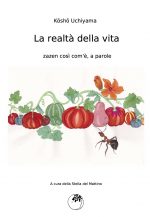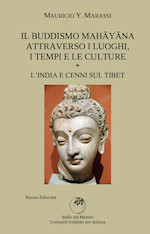My experience of takuhatsu
What is takuhatsu?
In India, since the time of Shakyamuni Buddha, monks had to give up all family life, livelihood and property except for three robes and one bowl (oryoki). Monks went to nearby towns to beg for food every morning, holding their bowls out to receive offerings. They ate food once before noon and were prohibited from eating in the afternoon. For monks, takuhatsu was a part of one’s practice to be free from desire for possessions and to be free from ego. They lived only for the sake of spiritual release from samsara. For lay people, offering food for monks was a practice of giving (dana paramita) to accumulate merit. This tradition still continues in Theravada Buddhist tradition of Southeast Asian countries. In this tradition there exist two sorts of offerings: lay people offer materials such as food, clothing, and other things to monasteries or monks; and monks offer Dharma, spiritual teachings they have studied through their practice. Monks and laity thereby support each other through the practice of offering.
Unlike ancient India, in China the Emperor, government and people from high society supported Buddhist monasteries. In the Zen tradition, monks started to grow their own food by farming. Many Zen masters entered mountains and built their own temple buildings, clearing and cultivating the land to grow rice and vegetables. Manual labor became a very important part of their practice. These monasteries had cooks called tenzos. Monks within the monasteries didn’t beg for food. Later in the history of Zen, big monasteries owned large property and hired lay people as workers. While Buddhist monks did takuhatsu, it was not the main way they supported their practice. In Japan in the thirteenth century, as Dogen Zenji said in Zuimonki, takuhatsu was not considered an important practice. Later, at Zen monasteries, monks did takuhatsu. Also, traveling monks did takuhatsu. Today, almost all Buddhist temples are supported by danka (family members). Only at Zen training monasteries is takuhatsu still practiced.
Takuhatsu at Antaiji
Antaiji, where I was ordained by Uchiyama Roshi and practiced for about four years, was a small, poor temple without any family members (danka). Thus, Antaiji had no regular income. From the time Uchiyama Roshi began to live at Antaiji in 1948, he lived on takuhatsu. This situation didn’t change until Uchiyama Roshi retired from Antaiji in 1975. In 1976, Antaiji moved to the countryside near the Japan Sea. Since then, monks support their practice by farming. They grow almost everything they eat. They do takuhatsu only when they need cash. While I practiced at Antaiji, we lived on takuhatsu. We did takuhatsu a few times a month. People offered money instead of food. We received just enough money to support our practice. We didn’t charge people who came to practice with us during sesshin or on other occasions. In the flyer of the monthly sesshin, it said, “Please bring one cup of rice per meal.”
For takuhatsu, we wore our kimono and koromo (black robe), straw sandals and a bamboo hat–the traditional style of dress for monks while travelling. Before leaving the temple, we chanted Hannya Shingyo (the Heart Sutra) and a short dharani called Shosaimyokichijo-darani. When we arrived at the street on which we planned to do takuhatsu, the monks bowed to each other, holding their bowls in front of their faces. We formed a line on one or both sides of the street depending on the number of monks. We intoned “Hooo.” One person would stand in front of a house or a shop saying, “Hooo,” until the people gave a donation or expressed rejection by words or gesture. After standing for a few minutes, if no one was there or people didn’t react, we would go to the next house. When people made a donation, we recited the verse of Dana, “Zaiho nise kudoku muryo danbaramitsu gusoku enman naishi hokkai byodo riyaku.” (The virtue of two kinds of offering, offering of material and offering of Dharma, is boundless. Perfection (paramita) of generosity is completed and benefits all beings in the whole dharma world.)
When we were rejected or ignored, we just bowed silently and went to the next house or shop. The amount of a donation would sometimes be as little as one yen (one cent), but most often was around 50 yen to 100 yen (one dollar). It was rare to receive more than 1000 yen (ten dollars) from one person. Some people bow with gassho, like they do to Buddha, when they put their donation into our oryoki (begging bowl). Some people looked down upon us and put money in our bowls like they would to ordinary beggars. Some people shouted, “Go away.” Some people rejected our efforts by saying, “I am sorry but…” Some people just ignored us. Some people made fun of us. We encountered many different reactions from many different people. Since we wore big bamboo hats, we didn’t see half of the world. Despite a person’s reaction, we needed to keep the same respectful attitude toward all people. We walked this way for about five to six hours a day.
| « Dharma inquiry |
Takuhatsu by myself » |
Se volete, lasciate un commento.
You must be logged in to post a comment.







